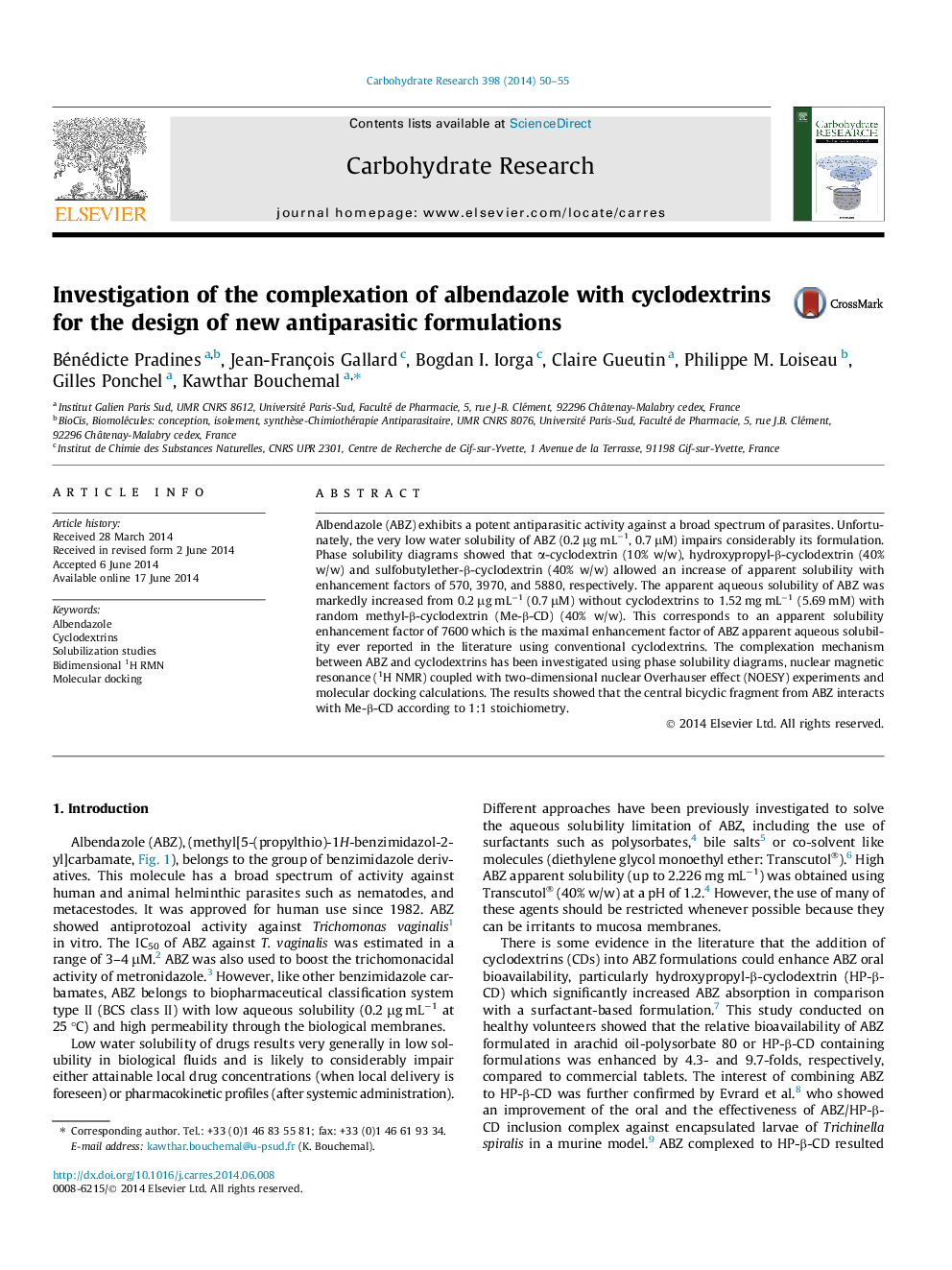| کد مقاله | کد نشریه | سال انتشار | مقاله انگلیسی | نسخه تمام متن |
|---|---|---|---|---|
| 1387615 | 1500853 | 2014 | 6 صفحه PDF | دانلود رایگان |
• The apparent aqueous solubility of albendazole was markedly increased.
• The best result was obtained using randomly methylated β-cyclodextrin.
• The complexation mechanism between ABZ and cyclodextrins was elucidated.
Albendazole (ABZ) exhibits a potent antiparasitic activity against a broad spectrum of parasites. Unfortunately, the very low water solubility of ABZ (0.2 μg mL−1, 0.7 μM) impairs considerably its formulation. Phase solubility diagrams showed that α-cyclodextrin (10% w/w), hydroxypropyl-β-cyclodextrin (40% w/w) and sulfobutylether-β-cyclodextrin (40% w/w) allowed an increase of apparent solubility with enhancement factors of 570, 3970, and 5880, respectively. The apparent aqueous solubility of ABZ was markedly increased from 0.2 μg mL−1 (0.7 μM) without cyclodextrins to 1.52 mg mL−1 (5.69 mM) with random methyl-β-cyclodextrin (Me-β-CD) (40% w/w). This corresponds to an apparent solubility enhancement factor of 7600 which is the maximal enhancement factor of ABZ apparent aqueous solubility ever reported in the literature using conventional cyclodextrins. The complexation mechanism between ABZ and cyclodextrins has been investigated using phase solubility diagrams, nuclear magnetic resonance (1H NMR) coupled with two-dimensional nuclear Overhauser effect (NOESY) experiments and molecular docking calculations. The results showed that the central bicyclic fragment from ABZ interacts with Me-β-CD according to 1:1 stoichiometry.
Representation of the complex between ABZ (cyan) and Me-β-CD (yellow) was obtained by molecular docking (1:1 stoichiometry). Surfaces colored in yellow and cyan represent solvent accessible surfaces for Me-β-CD and ABZ, respectively. Views from the outside larger cavity of Me-β-CD (A and C), lateral view of ABZ/Me-β-CD inclusion complex (B), view from the narrow side of the Me-β-CD cavity (D), and detailed view highlighting the two hydrogen bonds were observed between Me-β-CD and ABZ (E).Figure optionsDownload as PowerPoint slide
Journal: Carbohydrate Research - Volume 398, 29 October 2014, Pages 50–55
